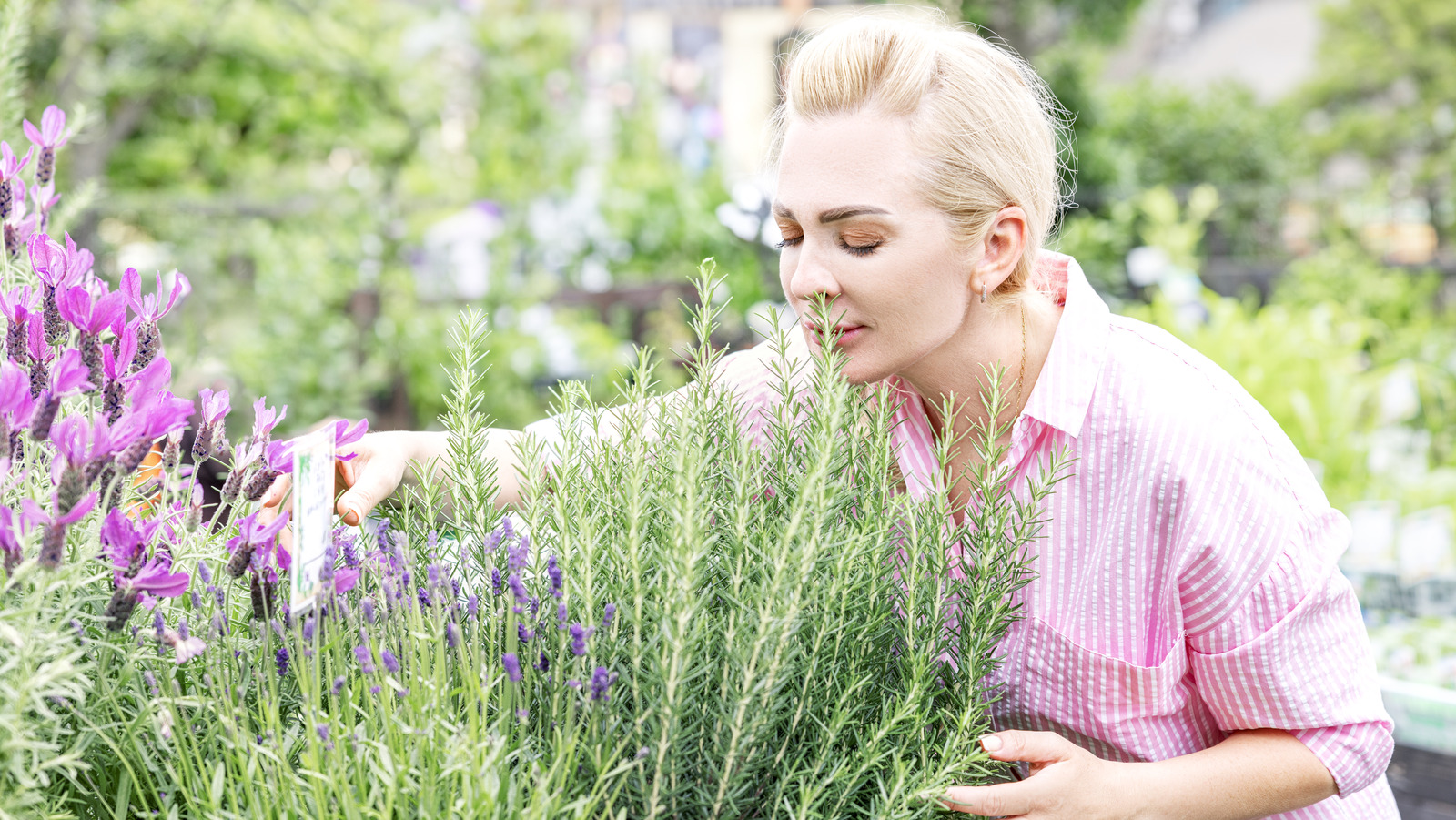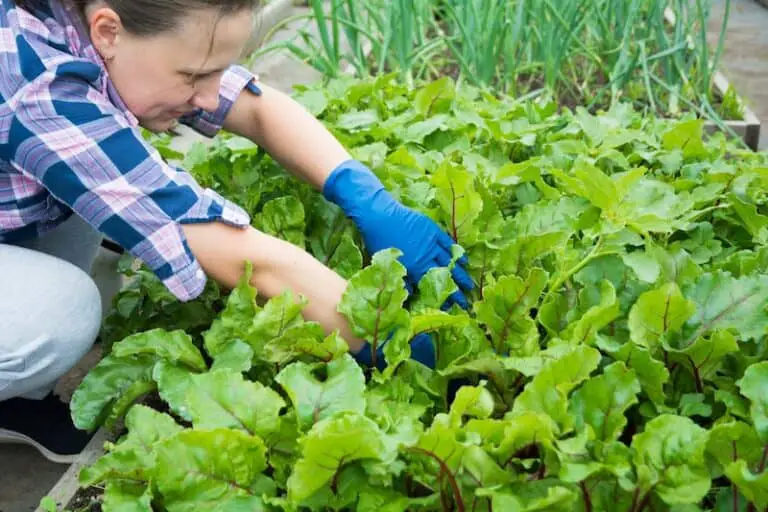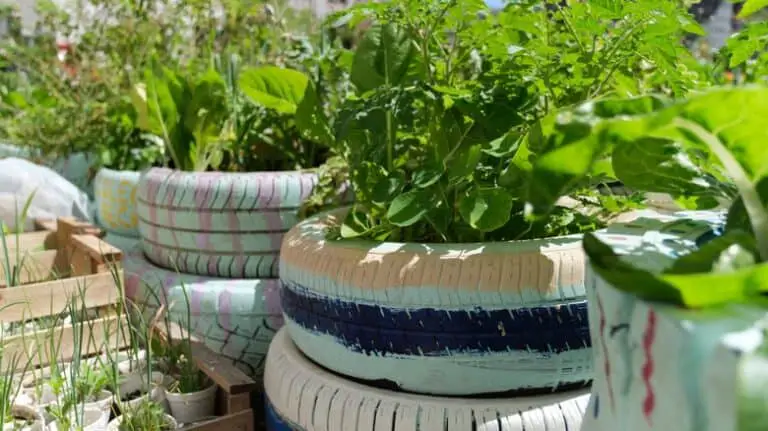Why Rosemary And Lavender Belong Together In The Garden: A Perfect Pair
Rosemary and lavender belong together in the garden because they share similar growing conditions and complement each other’s growth. Both plants thrive in well-drained soil and full sun, making them ideal companions.
Rosemary and lavender are popular choices for gardeners looking to create a harmonious and functional garden. These aromatic herbs not only enhance the garden’s beauty but also provide practical benefits. Rosemary’s needle-like leaves and lavender’s purple blossoms create a visually appealing contrast.
Their scents blend beautifully, offering a delightful fragrance. Moreover, both plants attract beneficial insects while repelling pests, promoting a healthier garden ecosystem. Their low-maintenance nature makes them perfect for busy gardeners. Planting rosemary and lavender together ensures a thriving, beautiful, and fragrant garden space.
Introduction To Rosemary And Lavender
Rosemary and lavender are beloved garden herbs. Both have unique qualities. They are often grown together. Their combination offers both beauty and utility. Understanding their history and characteristics can help you appreciate why they belong together.
Historical Significance
Rosemary has a rich history. In ancient Greece, students wore rosemary. It was believed to boost memory. Lavender also has ancient roots. Romans used it for bathing and scenting. Both herbs symbolize love and loyalty.
Basic Characteristics
| Feature | Rosemary | Lavender |
|---|---|---|
| Plant Type | Evergreen shrub | Woody perennial |
| Leaf Shape | Needle-like | Linear |
| Flower Color | Blue | Lavender |
| Height | Up to 4 feet | Up to 3 feet |
| Soil Preference | Well-drained | Well-drained |
Rosemary thrives in sunny locations. It needs minimal water. The plant has needle-like leaves. It blooms blue flowers.
Lavender also loves the sun. It prefers dry, sandy soil. The plant has linear leaves. It blooms lavender flowers.
These herbs complement each other. They both thrive in similar conditions. Growing them together enhances garden beauty. They also attract beneficial insects.
Complementary Growth Habits
Rosemary and lavender are a match made in gardening heaven. Their complementary growth habits make them perfect companions. This combination enhances your garden’s beauty and health.
Growth Patterns
Rosemary has an upright growth pattern. It can reach up to four feet tall. Its woody stems provide structure and height. Lavender, on the other hand, grows more compactly. It typically spreads out, forming a bushy shape. This contrast in growth patterns creates a balanced visual effect. Both plants enjoy full sun and well-drained soil. Their growth patterns make them easy to manage together.
Space Utilization
Space utilization is crucial in gardening. Rosemary’s vertical growth saves ground space. Lavender spreads horizontally, covering the soil. This minimizes weeds and retains moisture. The combination maximizes garden space effectively. Here’s a quick comparison:
| Plant | Growth Pattern | Space Utilization |
|---|---|---|
| Rosemary | Upright | Saves ground space |
| Lavender | Horizontal | Covers soil, reduces weeds |
Planting these herbs together maximizes space and enhances garden health. Their complementary growth habits are a gardener’s dream.
Soil And Nutrient Synergy
Understanding Soil and Nutrient Synergy can help your garden thrive. Rosemary and lavender are excellent examples of plants that grow well together. Their compatibility starts with the soil and extends to nutrient sharing.
Soil Preferences
Rosemary and lavender both prefer well-drained soil. This makes them perfect companions in the garden. They thrive in sandy or loamy soil types. The pH level should be slightly acidic to neutral, around 6.0 to 7.5. Ensuring proper soil drainage is crucial for their growth.
Consider adding organic matter to improve soil quality. Both plants dislike waterlogged soil. Raised beds can also help manage drainage issues effectively.
Nutrient Sharing
Rosemary and lavender can share nutrients effectively. Both plants are low-maintenance and don’t require heavy feeding. They can thrive on minimal nutrient inputs, making them excellent companions. Their root systems help in nutrient uptake and sharing.
Using organic compost can help both plants. It provides essential nutrients without overloading the soil. A balanced fertilizer can also be used once a year to maintain nutrient levels.
| Aspect | Rosemary | Lavender |
|---|---|---|
| Soil Type | Well-drained, Sandy | Well-drained, Sandy |
| pH Level | 6.0 to 7.5 | 6.0 to 7.5 |
| Nutrient Needs | Low | Low |
Consider planting rosemary and lavender together. Their soil and nutrient needs align perfectly. This combination can lead to a thriving and beautiful garden.
Climate Compatibility
Planting rosemary and lavender together in your garden is smart. They thrive in similar climates. This helps them grow strong and healthy. Their climate compatibility ensures they share the same care routine, making gardening easier.
Temperature Tolerance
Both rosemary and lavender are hardy plants. They can tolerate a wide range of temperatures. They thrive in warm, sunny climates but can withstand cooler temperatures too.
- Rosemary: Tolerates temperatures as low as 20°F (-6°C).
- Lavender: Can survive temperatures down to 10°F (-12°C).
These plants do well in USDA hardiness zones 8-10. This makes them perfect for gardens in these regions.
Sunlight Needs
Both plants love sunlight. They need at least six hours of direct sunlight daily. This shared requirement makes them ideal companions.
| Plant | Sunlight Needs |
|---|---|
| Rosemary | 6-8 hours of direct sunlight |
| Lavender | 6-8 hours of direct sunlight |
Plant them in a sunny spot for the best results. Their shared sunlight needs simplify garden planning.
Pest And Disease Resistance
Rosemary and lavender are more than just pretty plants. They are powerful allies in the garden. These herbs can help keep pests and diseases at bay. This makes them a valuable addition to any gardener’s toolkit.
Natural Pest Deterrents
Rosemary and lavender are natural pest repellents. Their strong scents drive away many common garden pests. These include aphids, moths, and beetles. Planting them can protect your other plants.
Here are some pests that rosemary and lavender can deter:
- Aphids
- Moths
- Beetles
- Flies
The oils in these herbs act as a natural pesticide. They create a barrier that pests don’t like. This means fewer bugs eating your plants.
Disease Prevention
Both rosemary and lavender have natural antifungal properties. These properties help prevent diseases in the garden. They can stop the growth of fungi and molds. This keeps your plants healthier.
Here is a table showing some diseases these herbs can help prevent:
| Disease | Effect |
|---|---|
| Powdery Mildew | Stops plant growth |
| Root Rot | Causes plant death |
| Botrytis | Damages flowers and leaves |
By planting rosemary and lavender, you create a healthier garden. These herbs act as natural defenders. They reduce the need for chemical pesticides and fungicides.

Credit: www.housedigest.com
Aesthetic Appeal
Rosemary and lavender together create a stunning aesthetic appeal in any garden. Their colors, textures, and growth habits complement each other beautifully. Planting them side by side enhances the visual harmony of your garden space.
Visual Harmony
Rosemary and lavender both have a similar growth habit. They are both bushy and compact, making them ideal garden companions. Their foliage contrasts perfectly; rosemary has dark green needles, while lavender has soft, silvery leaves.
Their flowers also add to the visual harmony. Lavender’s purple blooms and rosemary’s pale blue flowers create a pleasing color palette. This combination is both soothing and eye-catching.
Planting Tips:
- Space plants 2-3 feet apart
- Ensure they receive full sunlight
- Use well-draining soil
Seasonal Blooms
Both plants bloom at different times, providing year-round interest. Lavender typically blooms in late spring to early summer. Rosemary often blooms in late winter to early spring.
This staggered blooming schedule ensures that your garden never lacks color. You will always have something beautiful to look at, no matter the season.
Benefits of Staggered Blooming:
- Extended visual interest
- Continuous nectar source for pollinators
- Less maintenance required
| Plant | Bloom Time |
|---|---|
| Lavender | Late Spring to Early Summer |
| Rosemary | Late Winter to Early Spring |
Combining rosemary and lavender can transform your garden into a year-round paradise. Their aesthetic appeal will make your garden the envy of the neighborhood.
Companion Plant Benefits
Rosemary and Lavender are a perfect match in any garden. They offer companion plant benefits that enhance growth and provide mutual protection. Understanding why these two plants thrive together can transform your gardening experience.
Enhanced Growth
Both Rosemary and Lavender thrive in similar conditions. They need full sunlight and well-drained soil. These plants have comparable water requirements. Their compatibility in these areas means they can grow happily side by side.
Planting them together saves space and resources. They both benefit from the same type of care. This makes gardening simpler and more efficient.
Mutual Protection
Rosemary and Lavender offer mutual protection to each other. Rosemary’s strong scent deters pests like moths and beetles. Lavender’s aroma repels flies and mosquitoes. Together, they create a pest-free zone.
Lavender also attracts pollinators like bees and butterflies. This boosts the health and yield of both plants. Their combined scents can confuse harmful insects. This makes it harder for pests to target specific plants.
- Rosemary repels moths, beetles, and flies.
- Lavender repels mosquitoes and attracts pollinators.
By understanding these companion plant benefits, you can create a harmonious garden. Rosemary and Lavender not only thrive together but also enhance each other’s strengths. This makes them an ideal pair for any gardener.

Credit: www.msn.com
Uses In Culinary And Medicine
Rosemary and lavender are more than just beautiful garden plants. They have versatile uses in both culinary and medicinal fields. These herbs bring a range of flavors and health benefits that make them essential in any garden.
Culinary Applications
Rosemary is a staple in many kitchens. Its strong, earthy flavor enhances meat dishes, especially lamb and chicken. You can also use rosemary in soups, stews, and roasted vegetables. Add fresh or dried rosemary to your bread dough for a unique taste.
Lavender is not just for perfumes. Its delicate, floral notes add a unique flavor to various dishes. Use lavender in baking to make cookies, cakes, and bread. It also pairs well with chicken, lamb, and even some seafood dishes. Lavender can also be used to make flavorful syrups and teas.
| Herb | Culinary Uses |
|---|---|
| Rosemary | Meat dishes, soups, stews, roasted vegetables, bread |
| Lavender | Cookies, cakes, bread, syrups, teas, meat dishes |
Medicinal Properties
Rosemary is known for its medicinal benefits. It improves memory, reduces inflammation, and boosts the immune system. Rosemary oil is used for hair growth and to relieve muscle pain. Drinking rosemary tea can help with digestion and liver function.
Lavender has calming properties. It helps reduce anxiety and improves sleep quality. Lavender oil is often used in aromatherapy. It can also heal minor burns and insect bites. Drinking lavender tea helps with headaches and digestive issues.
| Herb | Medicinal Uses |
|---|---|
| Rosemary | Memory improvement, inflammation reduction, immune system boost, hair growth, muscle pain relief |
| Lavender | Anxiety reduction, sleep improvement, minor burn healing, aromatherapy, headache relief |
Tips For Planting Together
Combining rosemary and lavender in your garden can be very rewarding. These two herbs enhance each other’s growth and beauty. They also attract beneficial insects and repel pests. Here are some practical tips for planting them together.
Planting Techniques
Start by choosing a sunny spot for your herbs. Both rosemary and lavender love sunlight. Make sure the soil is well-draining. These plants do not like wet roots.
- Spacing: Plant rosemary and lavender 2-3 feet apart.
- Soil: Use sandy or loamy soil. Add compost to improve drainage.
- Watering: Water young plants regularly. Reduce watering once they are established.
Maintenance Practices
Maintaining your rosemary and lavender plants ensures they thrive. Both herbs require some care but are generally low-maintenance.
| Task | Frequency |
|---|---|
| Pruning | Twice a year |
| Fertilizing | Once a year |
| Weeding | Monthly |
- Pruning: Trim the plants after they bloom.
- Fertilizing: Use a balanced, slow-release fertilizer.
- Weeding: Keep the area around the plants weed-free.
Following these tips will help your rosemary and lavender flourish together. Enjoy a beautiful and fragrant garden with these lovely herbs.

Credit: www.reddit.com
Frequently Asked Questions
Why Plant Rosemary And Lavender Together?
Rosemary and lavender enhance each other’s growth. They share similar soil and sunlight needs, making them perfect garden companions.
Can Rosemary And Lavender Repel Pests?
Yes, both rosemary and lavender have natural pest-repelling properties. They help keep harmful insects away from your garden.
Do Rosemary And Lavender Attract Pollinators?
Absolutely, rosemary and lavender attract bees and butterflies. These pollinators help improve the health of your garden.
Conclusion
Planting rosemary and lavender together benefits your garden. These herbs complement each other beautifully. Their combined scents deter pests and attract pollinators. Both plants thrive in similar conditions, making them easy to care for. Enhance your garden’s beauty and functionality by pairing rosemary and lavender.
This duo is a perfect gardening match.







